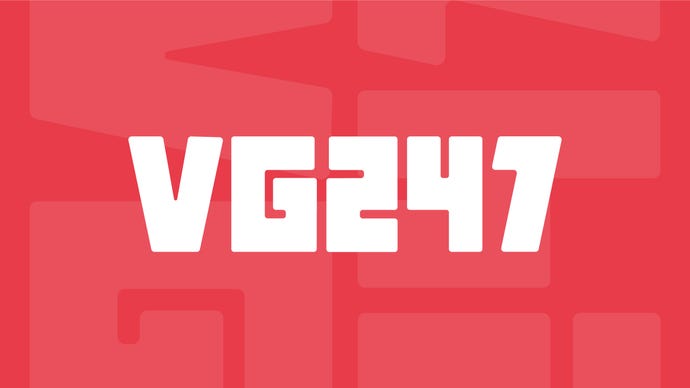What it feels like to play PS4's Project Morpheus
Stace Harman tumbles down the rabbit hole to find Morpheus and is introduced to a shark, a dragon and a sky full of spaceships for his troubles.
"While EVE: Valkyrie feels more dynamic than The Deep, the image is less sharp and there’s some blurring of distant objects that I don’t recall experiencing with Rift’s OLED lenses."
Traditionally the reserve of sci-fi films, pie in the sky discussion and the occasional, shonky tech experiment, virtual reality has long been a video game pipedream. However, Oculus Rift’s phenomenally successful Kickstarter campaign of 2012 – which raised almost ten times its $250,000 target – sent a clear message that a significant number of people were ready to take the leap from the theoretical to the actual. Unsurprisingly, the industry is responding accordingly.
But while Rift represents the bold, experimental steps of a handful of developers on a fluid, ever-changing platform, it’s likely to be Sony’s Project Morpheus that offers console owners their first real experience of what virtual reality looks like in the 21st century.
The first thing to note about Morpheus is the unit itself, which is all smooth edges, brushed matte plastic and makes me feel a bit like Isaac Clarke of Dead Space fame when I put it on. The headset is comfortable and features multiple adjustment options for both the frame and the eye unit that houses the lenses. An elasticated ski-goggle-style strap helps keep the lenses in alignment with my eyes, while a sturdier plastic frame supports the relatively light-weight unit.
It’s worth taking a bit of time to adjust the various straps, sliders and wheels that are used to keep everything where it should be, as failure to do so on one occasion meant the unit rested more heavily on my nose, making things a little warm and uncomfortable after a few minutes of play. The 90 degree vision field means there’s a small gap around the periphery of my vision and there’s some light-bleed where the bottom of the unit doesn’t sit quite snug against my face but overall it’s comfortable and will likely undergo small iterations in the months to come.
While the fit and feel of the unit is an important factor in how immersive the overall experience is, it takes a back seat once I’m having images beamed through the LCD lenses. The three experiences on offer show different sides to the tech’s application and hint at where early thinking and prototyping has been taking the developers.
The Deep
First up is The Deep, in which I’m stood in a diver’s cage that’s submerged just beneath the surface of the water. I’m able to look up to see the boat above me and look down to see my wet-suit clad torso, arms and legs. The controller acts as a flare gun, with the PlayStation Camera working well as a calibration tool.
This serves as the acclimatisation period before heading down into the inky depths. As the cage is lowered, I’m encouraged to look around to witness fish swimming behind and below me and it’s at that point that I notice my shoulder is bleeding, a thin wisp of blood trailing off into the blue. Shortly after, a ruddy great shark shows up to tear bits off the safety cage.
"We thought riding a horse would work well but the constant up and down movement was off-putting," - Dave Ranyard, Sony
While it’s not enough to make me jump or feel apprehensive, it does make me wonder how affecting playing something like or Slender or Daylight might be (and after this display, I’d pay good money to see the results of Brenna playing it).
Ultimately, there’s very little game here but as a tech demo, The Deep gives an indication of the extra dimensions offered by VR, which is something that Sony’s London Studio has been experimenting with for some time.
“We’ve had people working on Morpheus for around 12 months and some things have been working better than expected and others not so well,” explains studio director, Dave Ranyard. “We thought riding a horse would work well but the constant up and down movement was off-putting.
“We really had two goals with this tech demo, the first was acclimatisation and giving people an opportunity to look around. The second thing was to get an emotional response, hence the shark.”
Eve: Valkyrie
Moving on to Eve: Valkyrie where’s there’s not a shark in sight but there is something that more closely resembles a game. Valkyrie controls like a standard experience on the pad, with Morpheus putting you inside the cockpit and providing that same ability as in The Deep to look around at the depths of space. Holding L2 brings-up a targeting reticule that is placed over enemy ships by tracking them with your head movements to acquire a lock.
There’s a noticeable sense of momentum from the 360-degree movement, particularly when decelerating the ship, and also a feeling of slight nostalgia for the wrap-around arcade cabinets from a misspent youth at Camber Sands amusement arcade. However, while it feels more dynamic than The Deep, the image is less sharp and there’s some blurring of distant objects that I don’t recall experiencing with Rift’s OLED lenses.
The Castle
Combining The Deep’s experiential approach with Eve: Valkyrie’s recognisable game elements is the third and final demo, The Castle. For those who are old enough, this is like an inverse of classic kids’ TV show, Knightmare, as here it’s the person donning the helmet who can see the virtual world around them, rather than having to shout “Where am I?” every few minutes. Stood in the sunny grounds of the titular castle, I’m presented with a dummy and directed to pick up the swords at my side by squeezing the triggers on the two Move controllers I’m holding.
This provides a sense of tactile connection with the world that’s missing in both the previous experiences and Move’s precision movement means that I can insert the point of the sword into armour joints with ease. I can also swing the sword lightly to tap against the plate mail of my hapless adversary or swing with gusto to lop off hands, feet, legs, arms and, finally, the head (while doing a Monty Python impression, of course). Discarding the swords, I’m equipped with one of my all time favourite video game weapons, the crossbow, and quickly take apart another dummy that’s set a little further back.
"Move’s precision is key to selling the game concepts here, although it’s unlikely that too many developers will opt for a set-up in which two of the wand-like controllers are required."
Again, Move’s precision is key to selling the game concepts here, although it’s unlikely that too many developers will opt for a set-up in which two of the wand-like controllers are required. In a final flourish of karmic retribution, a dragon lands in the courtyard to tower over me. I raise the crossbow only to discover that I’m out of ammo so can do little to ward off the gaping maw that descends to plunge me into darkness.
Smiling, I remove the Morpheus/Knightmare helmet and conclude that The Castle is by far the most immersive and impressive experience of the afternoon, but it’s encouraging to see three different approaches to the tech, rather than have three slight variations on the same theme. It’s also worth noting that I didn’t experience any of the disorientation or nausea that’s sometimes associated with VR from any of the demos.
Speaking with Ranyard afterwards, I suggest that Morpheus’ VR is already leagues ahead of any of the 3D experiences I’ve had and, as a bonus, doesn’t require me to buy a new TV to support the experience.
"The stars are aligned for VR at the moment. There’s genuine excitement amongst developers for creating something new," - Dave Ranyard, Sony.
“I think that the stars are aligned for VR at the moment,” says Ranyard. “The technology’s there in terms of being able to get the frame-rates and refresh rates to where they need to be and smart phones and tablets have helped bring about huge improvements to screens over the last couple of years. There’s genuine excitement amongst developers for creating something new.”
The cost of this “something new” is still to be decided but by leveraging existing technology that some gamers will already have in the form of the PlayStation Camera and Move, Morpheus will prove an easier sell than if it required a whole new set-up. What’s more, the choice of experience – from standing up and swinging a sword to sitting on your sofa wearing the headset – means it should prove relatively inclusive, too.
Morpheus represents an intriguing and valuable proposition for Sony and the wider console market and key to selling the concept will be putting Morpheus in the hands – and on the heads – of gamers at expos and road shows. Marketed well enough, widespread VR could finally overcome its false starts of the past to represent a viable game play experience in the not too distant future.














